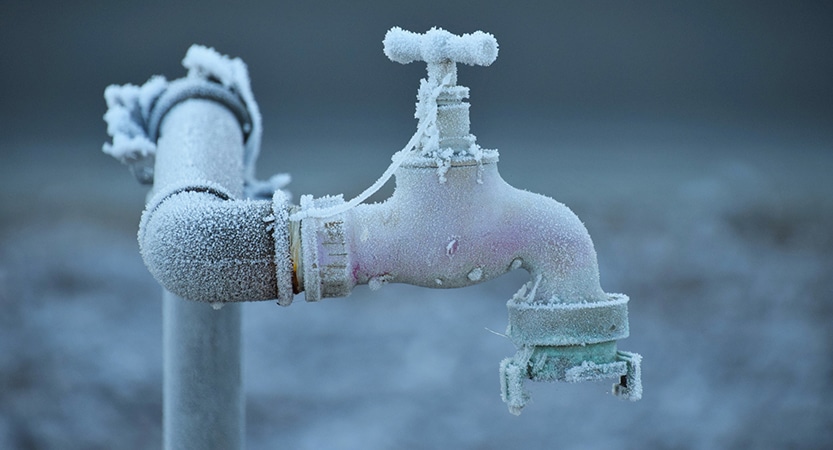Presented here further down you can locate additional good guidance related to Winter Plumbing Precautions: Preventing Frozen Pipes.

Winter can wreak havoc on your plumbing, particularly by freezing pipes. Here's how to prevent it from happening and what to do if it does.
Introduction
As temperature levels drop, the danger of icy pipes boosts, possibly bring about costly repairs and water damages. Recognizing exactly how to prevent icy pipes is important for property owners in cool environments.
Understanding Icy Pipes
What creates pipes to ice up?
Pipes ice up when exposed to temperature levels below 32 ° F (0 ° C) for prolonged periods. As water inside the pipes ices up, it expands, putting pressure on the pipeline walls and potentially creating them to burst.
Dangers and problems
Icy pipes can result in water disruptions, home damages, and pricey repairs. Burst pipes can flood homes and cause comprehensive structural damage.
Indications of Frozen Pipeline
Determining frozen pipes early can prevent them from breaking.
Just how to recognize frozen pipes
Look for lowered water circulation from faucets, unusual smells or sounds from pipes, and noticeable frost on revealed pipes.
Prevention Tips
Shielding vulnerable pipes
Wrap pipes in insulation sleeves or utilize warm tape to safeguard them from freezing temperatures. Concentrate on pipes in unheated or external locations of the home.
Home heating methods
Maintain interior spaces sufficiently heated, specifically areas with plumbing. Open up cabinet doors to enable warm air to distribute around pipes under sinks.
Protecting Outside Pipes
Garden hose pipes and exterior taps
Disconnect and drain garden tubes prior to winter. Set up frost-proof spigots or cover outside taps with protected caps.
What to Do If Your Pipelines Freeze
Immediate activities to take
If you believe icy pipelines, maintain taps open up to relieve stress as the ice thaws. Utilize a hairdryer or towels soaked in warm water to thaw pipelines slowly.
Long-Term Solutions
Structural changes
Consider rerouting pipes away from outside wall surfaces or unheated locations. Include additional insulation to attic rooms, basements, and crawl spaces.
Updating insulation
Buy high-quality insulation for pipelines, attic rooms, and walls. Correct insulation helps maintain constant temperature levels and reduces the danger of icy pipelines.
Verdict
Protecting against icy pipelines requires proactive actions and fast feedbacks. By understanding the reasons, indications, and safety nets, property owners can secure their pipes throughout cold weather.
6 Proven Ways to Prevent Frozen Pipes and Protect Your Home
Disconnect and Drain Garden Hoses
Before winter arrives, start by disconnecting your garden hoses and draining any remaining water. Close the shut-off valves that supply outdoor hose bibs and leave the outdoor faucet open to allow any residual water to drain. For extra protection, consider using faucet covers throughout the colder months. It’s also important to drain water from any sprinkler supply lines following the manufacturer’s directions.
Insulate Exposed Pipes
Insulating your pipes is an effective way to prevent freezing. Pipe insulation is readily available at home improvement stores and is relatively inexpensive. Pay close attention to pipes in unheated areas such as the attic, basement, crawl spaces, or garage. Apply foam insulation generously to create a buffer against the cold. You can also wrap your pipes in heat tape or thermostat-controlled heat cables for added warmth.
Seal Air Leaks
Inspect your home for any cracks or openings that could let in cold air. Seal any holes around the piping in interior or exterior walls, as well as the sill plates where your home rests on its foundation. Additionally, make sure to keep your garage door closed unless you’re entering or exiting. Leaving it open creates a significant air leak that can lead to frozen pipes.
Allow Warm Air Circulation
During cold snaps, it’s essential to allow warm air to circulate evenly throughout your home. Leave interior doors ajar to promote better airflow. Open kitchen and bathroom cabinets to help distribute heat consistently around the rooms. If you have small children or pets, be sure to remove any household chemicals or potentially harmful cleaners from open cabinets for safety.
Let Faucets Drip
A small trickle of water can make a big difference in preventing ice formation inside your pipes. When temperatures drop significantly, start a drip of water from all faucets served by exposed pipes. This continuous flow helps prevent the water from freezing. Additionally, running a few faucets slightly can relieve pressure inside the pipes, reducing the chances of a rupture if the water inside does freeze.
https://choateshvac.com/6-proven-ways-to-prevent-frozen-pipes-and-protect-your-home/
:strip_icc()/snow-outdoor-faucet-pipes-4af65d1e5e904fb1aa7bf74071fe5d89.jpg)
As a reader about 6 Ways to Prevent Frozen Pipes, I imagined sharing that excerpt was sensible. I beg you pause to promote this content if you appreciated it. I cherish your readership.
Call Today
Comments on “Essential Strategies for Avoiding Frozen Plumbing in Cold Weather”